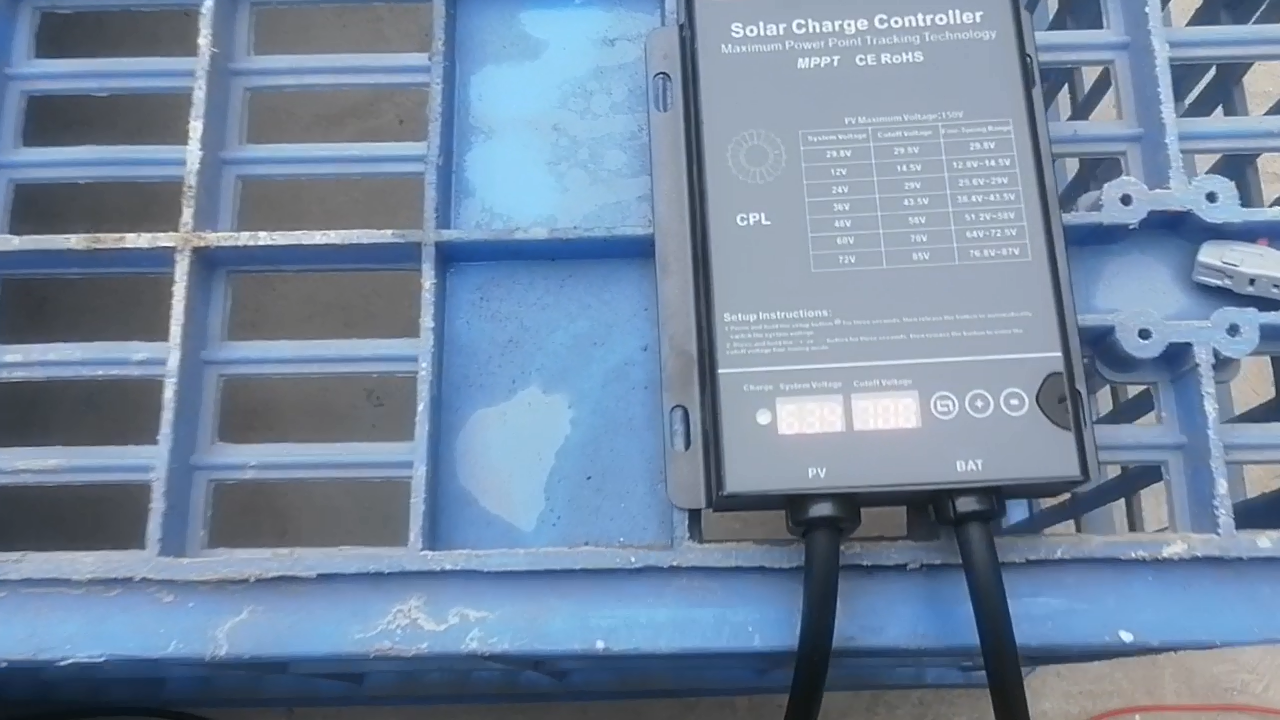The concept of Margin of Safety (MoS), originating from value investing, emphasizes reducing risk by reserving tolerance buffers. Applying this to MPPT boost controller evaluation requires quantifying robustness across three dimensions: design redundancy, operational adaptability, and extreme scenario protection. Below is the detailed framework:
I. Voltage and Current Safety Margins of MPPT Boost Controller
- Input Voltage Range
- Rated Value: E.g., the MPPT boost controller specifies 12-24V solar panel input.
- Safety Margin: In practice, ensure input voltage does not exceed 80% of the rated range (e.g., max 19.2V instead of 24V) to avoid damage from transient spikes (e.g., lightning or load surges).
- Output Voltage Range
- Battery Compatibility: For a 48V battery pack, the boost output should support 36-60V (±25% buffer).
- Validation Testing: Verify the MPPT boost controller can briefly withstand 72V (120% of rated output) without triggering overvoltage protection or failure.
- Current Handling
- Continuous Current: If rated for 30A, ensure components and cooling can stably handle 24A (80% load).
- Peak Current: Test if the controller recovers automatically after short-term overloads (e.g., 40A for 10 seconds), reflecting dynamic redundancy.
II. Temperature and Environmental Adaptability
- Operating Temperature Range
- Rated Range: E.g., -20°C to 60°C.
- Safety Margin: Limit ambient temperature to 70% of the rated range (e.g., keep below 42°C in summer) to avoid thermal throttling or cold-start failures.
- Cooling Redundancy
- Thermal Simulation Testing: Critical components (e.g., MOSFETs, inductors) should operate below 75% of their rated temperature under full load (e.g., ≤95°C for 125°C-rated parts).
- Passive Cooling: Heat sinks or thermal materials in fanless designs should have ≥30% extra capacity.
III. MPPT Algorithm Fault Tolerance
- Rapid Light Changes
- Cloud Cover Simulation: When irradiance drops from 1000W/m² to 200W/m², the controller must relock the maximum power point within 0.5 seconds with output voltage fluctuation ≤±5%.
- Load Step Response
- Battery Connection/Disconnection: Voltage/current overshoot should be ≤10%, with recovery time ≤1 second.
- Noise Immunity
- Input Disturbance: With 10% ripple voltage or high-frequency noise, MPPT tracking error must stay within ±3%.
IV. Protection Mechanism Thresholds
- Overvoltage Protection (OVP)
- Rated Trigger: E.g., 72V.
- Safety Margin: Set the actual threshold at 90% of rated value (e.g., 64.8V) for early intervention.
- Overcurrent Protection (OCP)
- Two-Stage Protection: Issue warnings at 90% of rated current (e.g., 27A) and cut off at 110% (33A).
- Overtemperature Protection (OTP)
- Gradual Power Reduction: Activate cooling or reduce output at 80% of the temperature limit instead of immediate shutdown.
V. Economic Safety Margins
- Cost Redundancy
- Select components with 50% higher specs than required (e.g., use 100V capacitors for 60V needs) to extend lifespan and reduce failures.
- Maintenance Buffer
- Reserve 20% of the budget for unexpected replacements (e.g., surge protection in lightning-prone areas) over the design lifespan (e.g., 10 years).
VI. Case Study: Quantifying Safety Margins
Scenario: Designing a solar charging system for a 48V electric RV with an MPPT controller rated for:
- Input: 12-24V, Output: 36-60V, Max Current: 30A, Operating Temp: -20°C~60°C.
Safety Margin Design:
- Input Voltage: Use ≤19.2V (80% of 24V) with added MOV surge protection.
- Output Current: Daily use ≤24A; short-term peaks up to 36A (10 seconds).
- Temperature Control: Install cooling fans to keep controller ambient ≤45°C.
- Algorithm Testing: Simulate sandstorm-induced irradiance swings with ≤2% MPPT tracking error.
Conclusion: Safety Margin = Reliability × Efficiency Balance
By reserving margins in voltage, current, temperature, and algorithms, MPPT controllers achieve “efficiency without fragility” in harsh environments. Users should prioritize manufacturers that disclose redundancy metrics (e.g., derating curves) over peak specs alone. True safety stems from respect for extreme scenarios and proactive prevention.



